Kadeau, rooted in the traditions of Bornholm, has long been renowned for its masterful approach to preservation, a key aspect of its culinary philosophy. The Copenhagen outpost, which holds two Michelin stars, continues to merge preservation techniques with a deep respect for ingredients and traditions from Bornholm, offering a distinctive dining experience that reflects the region’s heritage.
For reasons I still can’t quite explain, it had been years since my last visit to Kadeau, despite hearing endless praise from my foodie friends. On a warm late-summer evening in August, I finally returned, eager to see how the kitchen would balance their preservation techniques with the abundance of fresh summer produce. The result was a captivating interplay of both.
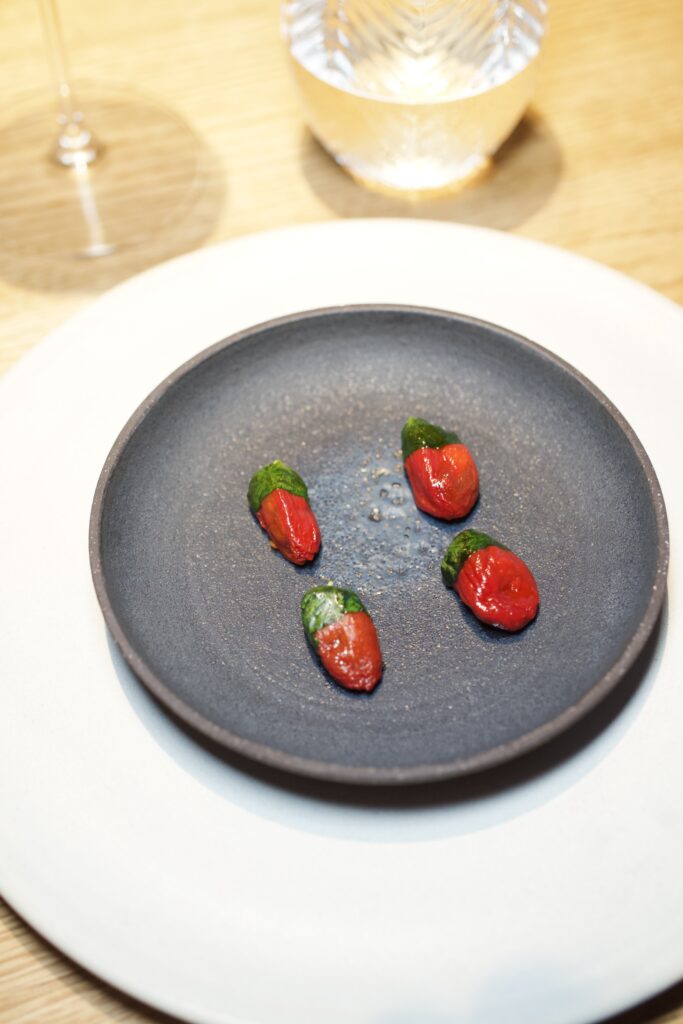
The meal began with two delicately prepared snacks: tomato with mint and spruce. The dried tomatoes had an intensified flavor that was balanced by the fresh, herbal lift from the mint and the subtle, earthy notes of spruce. It was an interesting introduction, setting the tone for the evening’s focus on preservation.
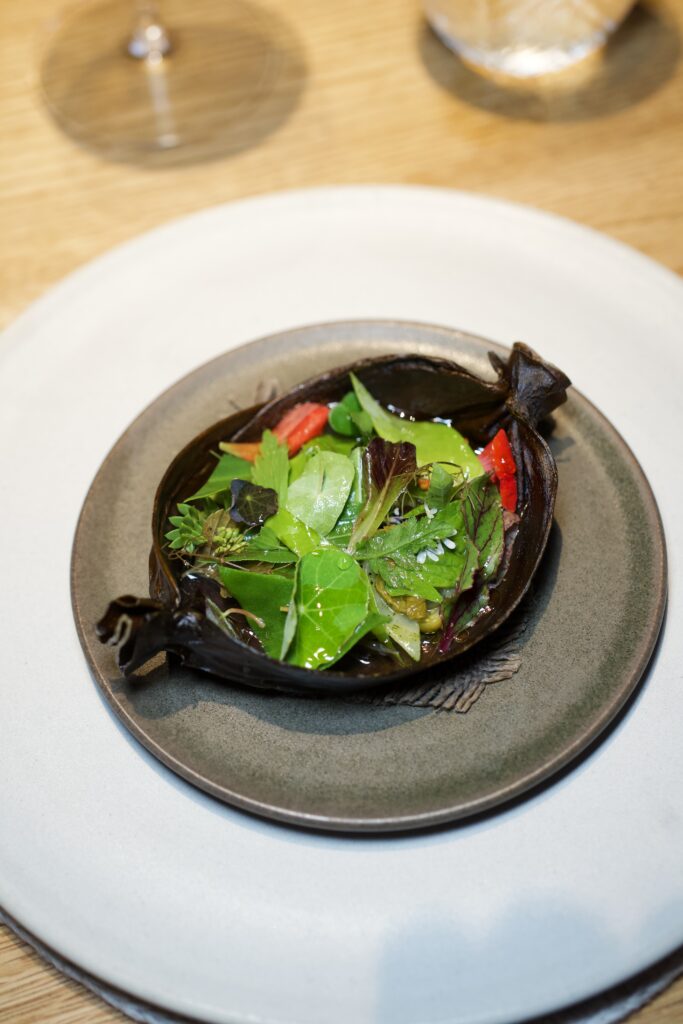
Next was a small salad of kelp, beach herbs, and garden shoots. It was light and refreshing, with the gentle brininess of the kelp pairing nicely with the crisp, fresh flavors of the garden shoots. This dish brought a sense of seasonality to the table, showcasing the freshness of summer produce.
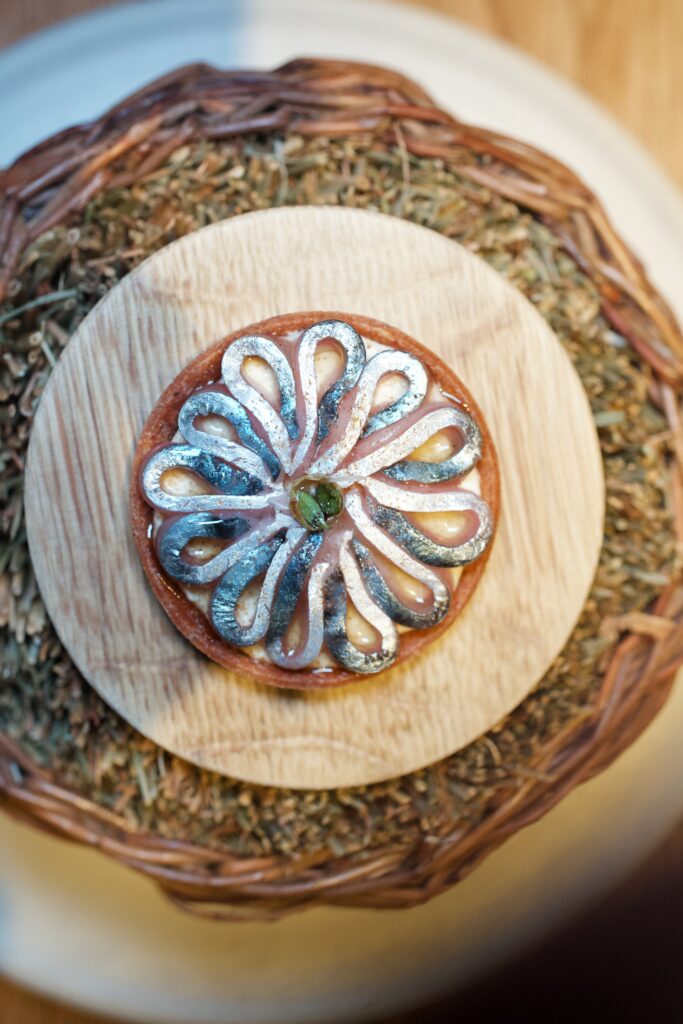
A dish with more traditional Danish flavors followed: slightly cured mackerel served on a cracker with unripe blackcurrants and soft cheese. The curing was subtle, allowing the mackerel’s natural flavors to shine, while the blackcurrants added a tartness that balanced the creamy richness of the cheese.
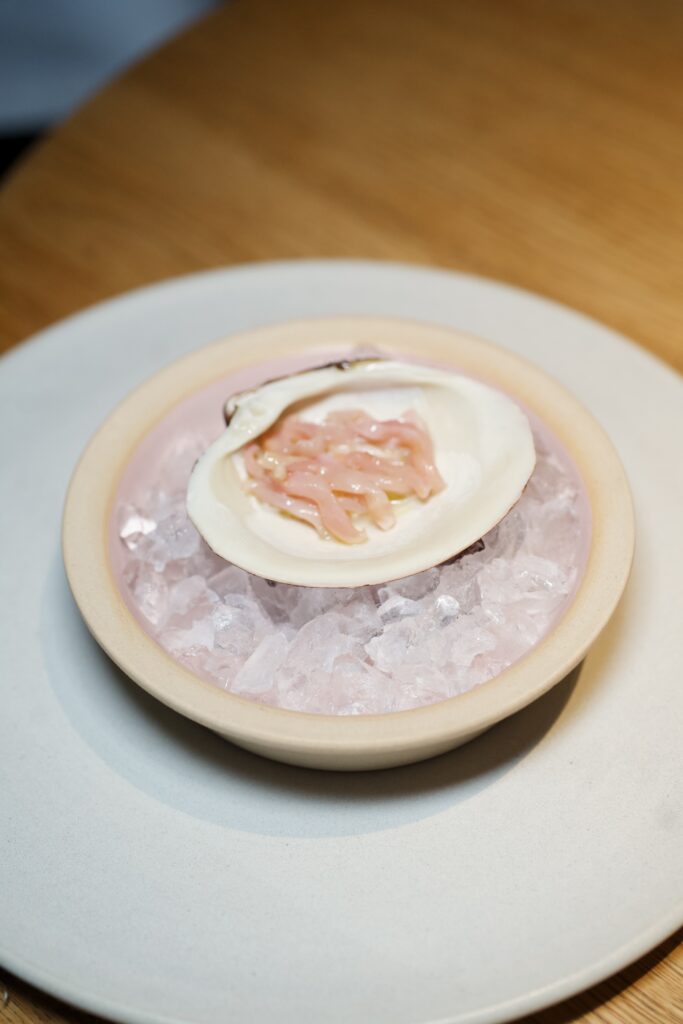
One of my favorite moments of the meal involved the mahogany clam. These clams, known for living decades and sometimes more than a century in cold saltywaters, have a rich, deep flavor that was allowed to stand on its own, paired simply with sloe blossom oil. Eating something this old makes me feel humble when thinking of the time it took for the clam to end on my dish.
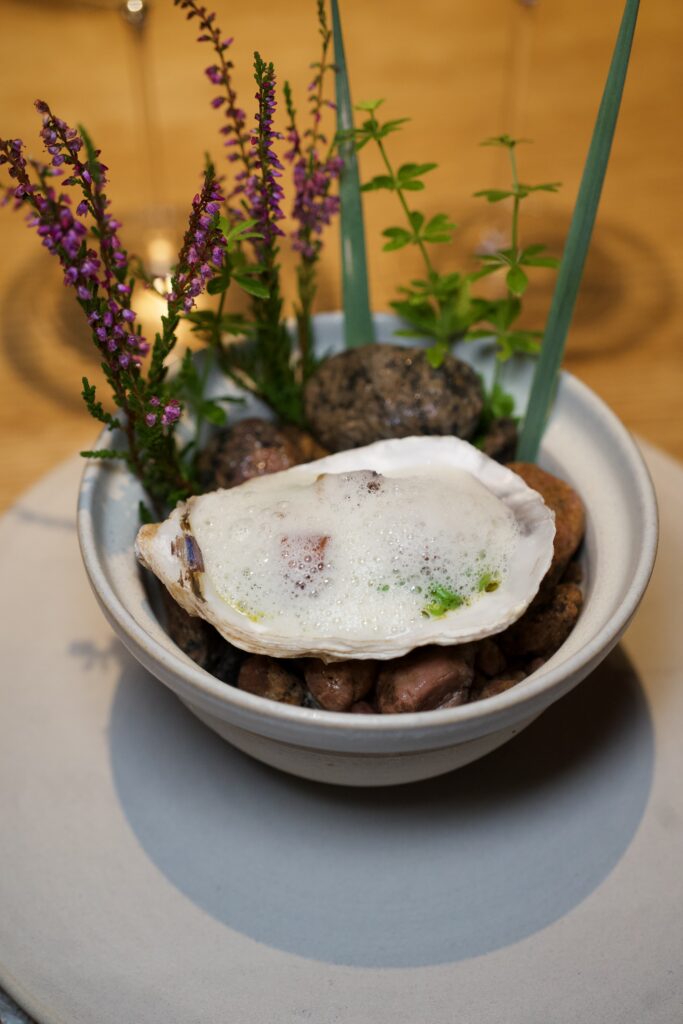
Another standout dish was the last of the season’s sweet peas, served with a raw oyster, fig leaf oil, and a touch of Nordic spice in the form of ants. The flavors here were delicate but complex, with the sweetness of the peas contrasting with the briny oyster and the subtle, aromatic notes of fig leaf. The ants added a hint of acidity that brought the dish together in a surprising and interesting way.
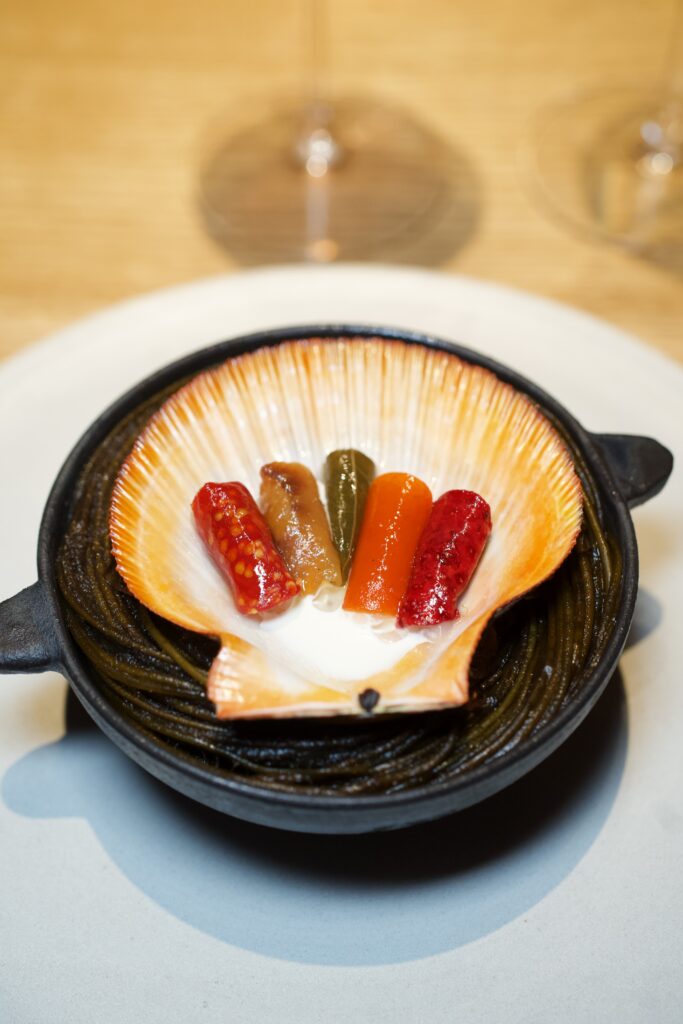
However, not every dish hit the mark for me. A serving of scallops with fruit leather, while beautifully presented, left me wondering why the fruits weren’t offered fresh at the height of summer. The preparation, though well-made, didn’t capture the natural brightness that fresh fruit could have provided alongside the sweet scallops.
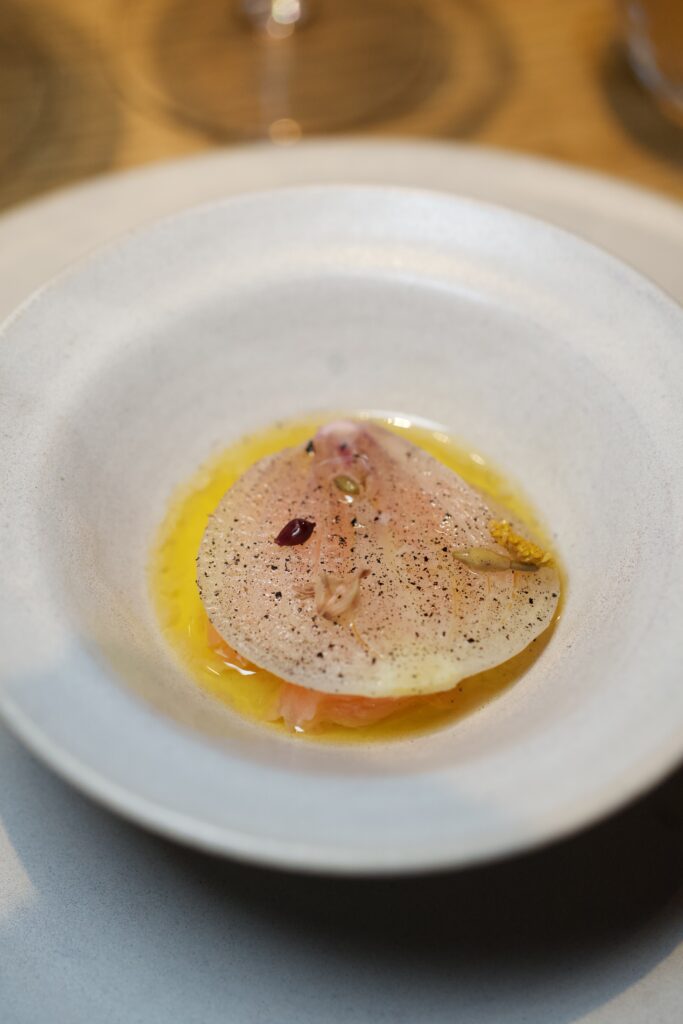
Then came the signature dish: salmon smoked both hot and cold. The dual smoking technique gave the salmon a deep, rich flavor and perfect texture. Paired with a slow-baked onion and a buttery sauce, it was indulgent and satisfying—an excellent example of the fact that great craftsmanship will get you everywhere.
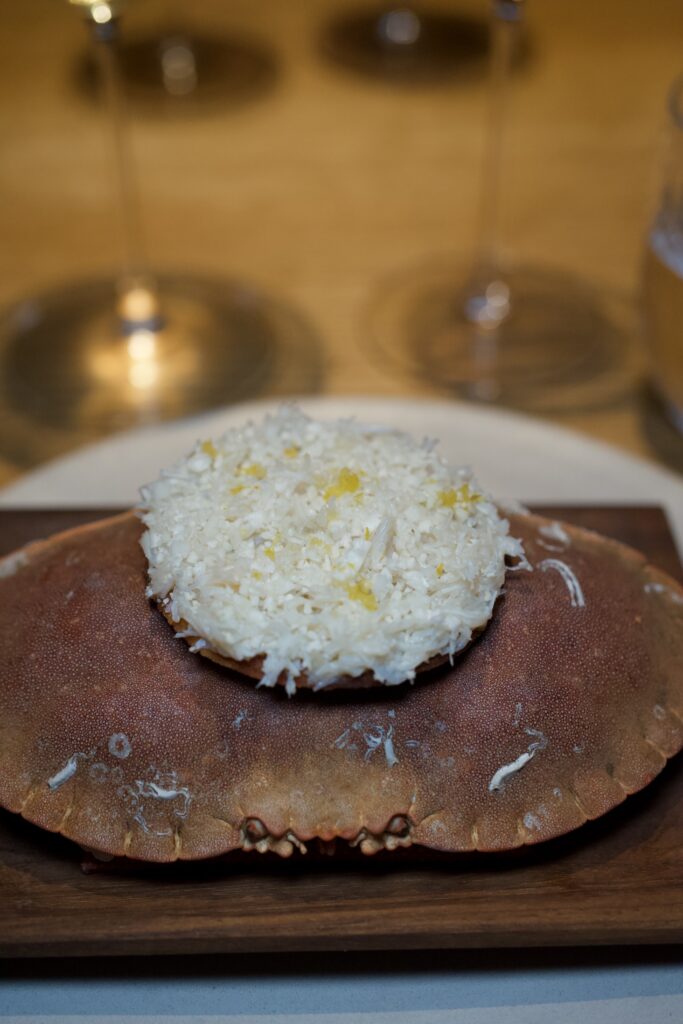
A small cracker filled with crab and elderflower followed. Though enjoyable, with the subtle sweetness of elderflower playing off the crab, it didn’t leave as strong an impression as some of the other dishes. It was a momentary lull in an otherwise great lineup.
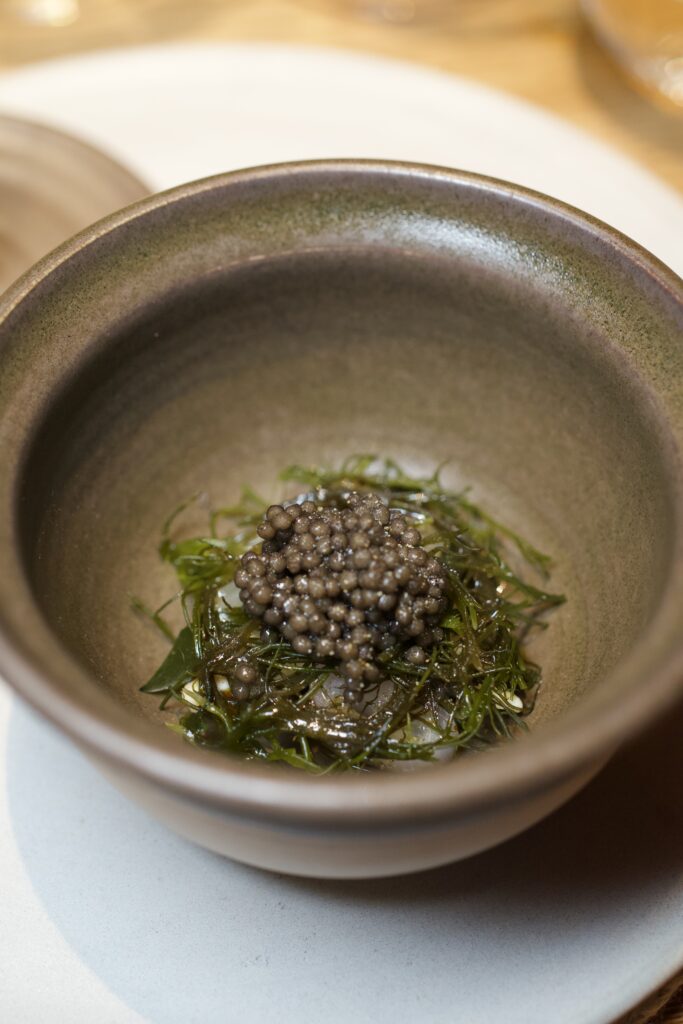
Caviar, now a fixture in Copenhagen’s fine dining scene, was served with shallots and seaweed. While the dish was luxurious, the seaweed’s strong flavor slightly overpowered the more delicate caviar. It was enjoyable, but I found myself wishing for a little more balance between the elements and more focus on ingredients that would support but not overshadow the delicate caviar.
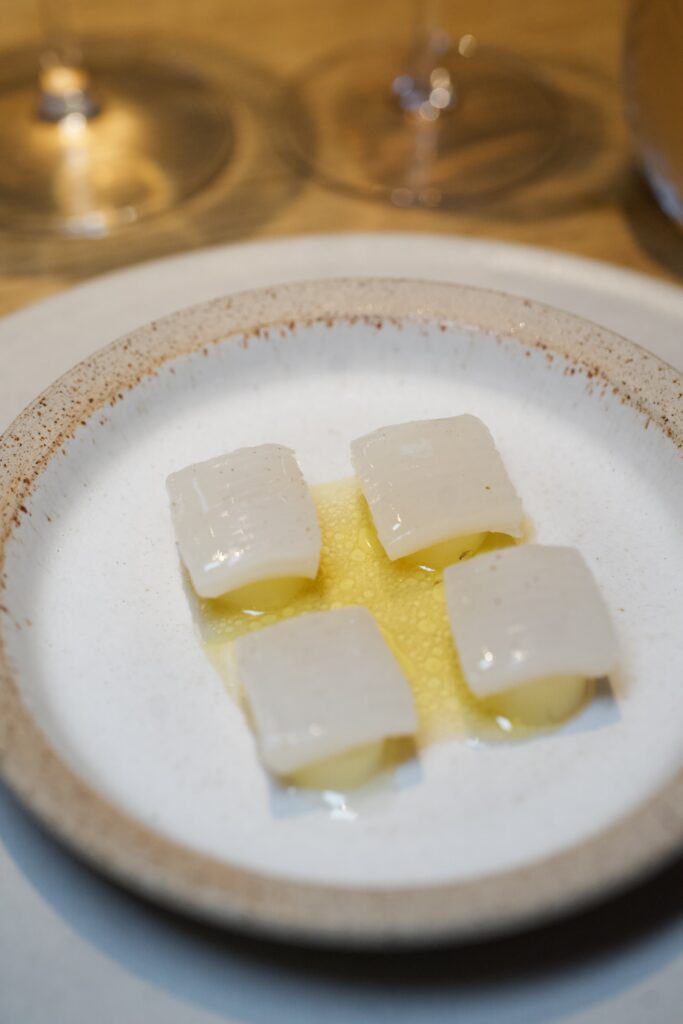
A dish that played with textures came next: Danish potatoes paired with soft squid and a buttery sauce with rosehip. The potatoes were tender yet firm, the squid soft, and the rosehip added a pleasant floral note that complemented the richness of the butter. It was a satisfying and thoughtfully composed dish.
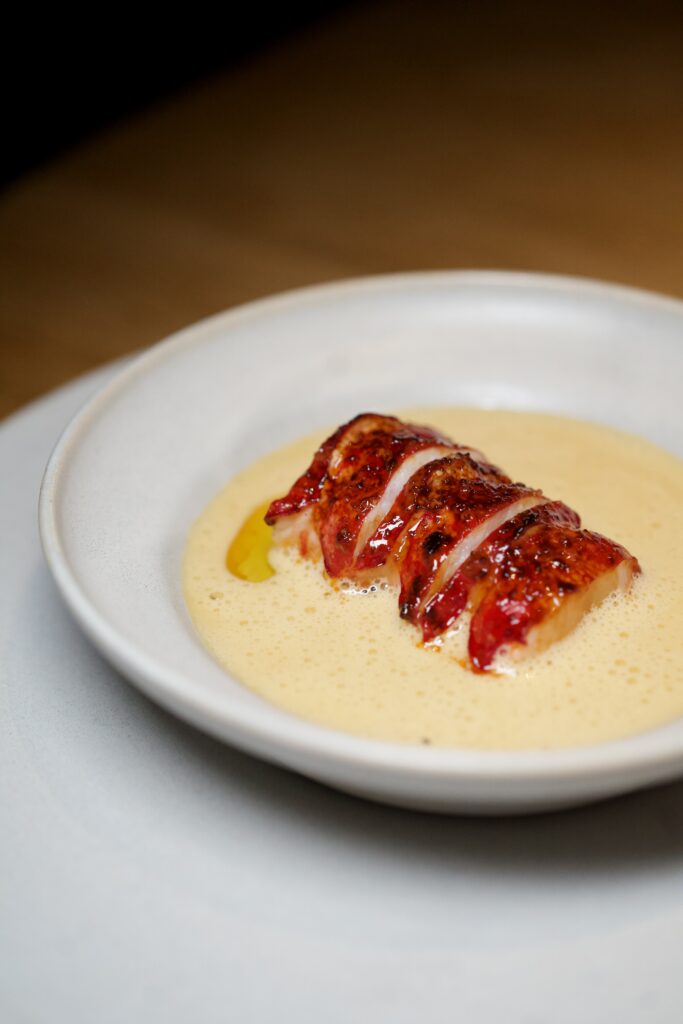
The first main course was a perfectly grilled lobster tail, served with a classic buttery sauce made from the shells. The lobster was succulent and flavorful, with the sauce adding an extra layer of depth. It was a straightforward but beautifully executed dish that let the ingredients shine.
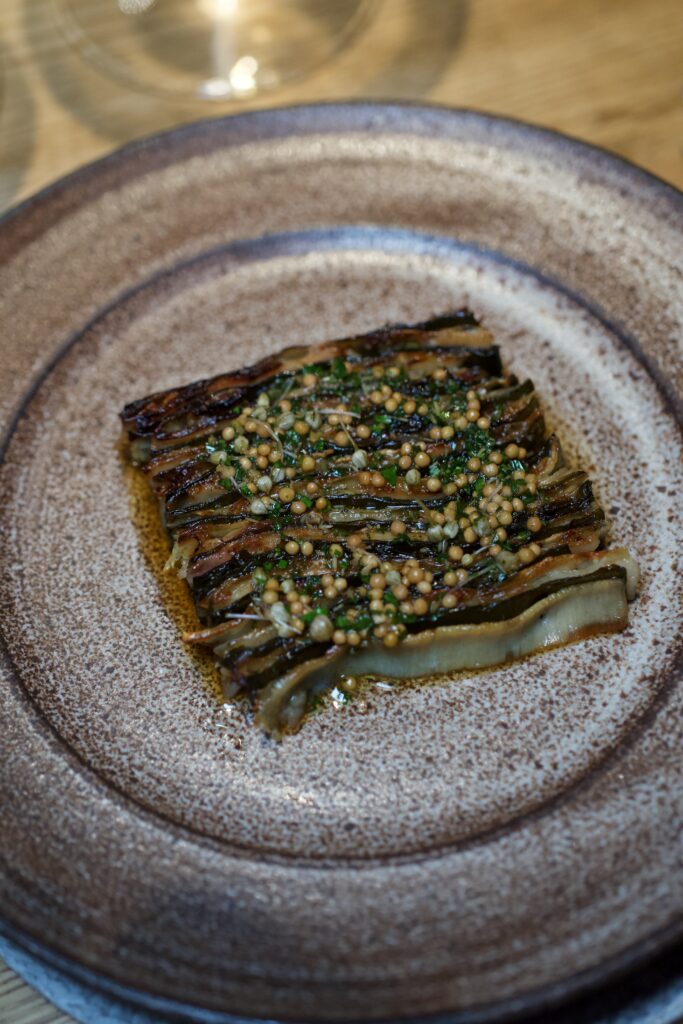
Our final savory course was pressed pork with celeriac, accompanied by a sauce infused with dill seeds. The pork was tender and flavorful, and the celeriac added a sweet, earthy balance. The dill seeds brought a subtle spice that gave the dish an unexpected but welcome twist.
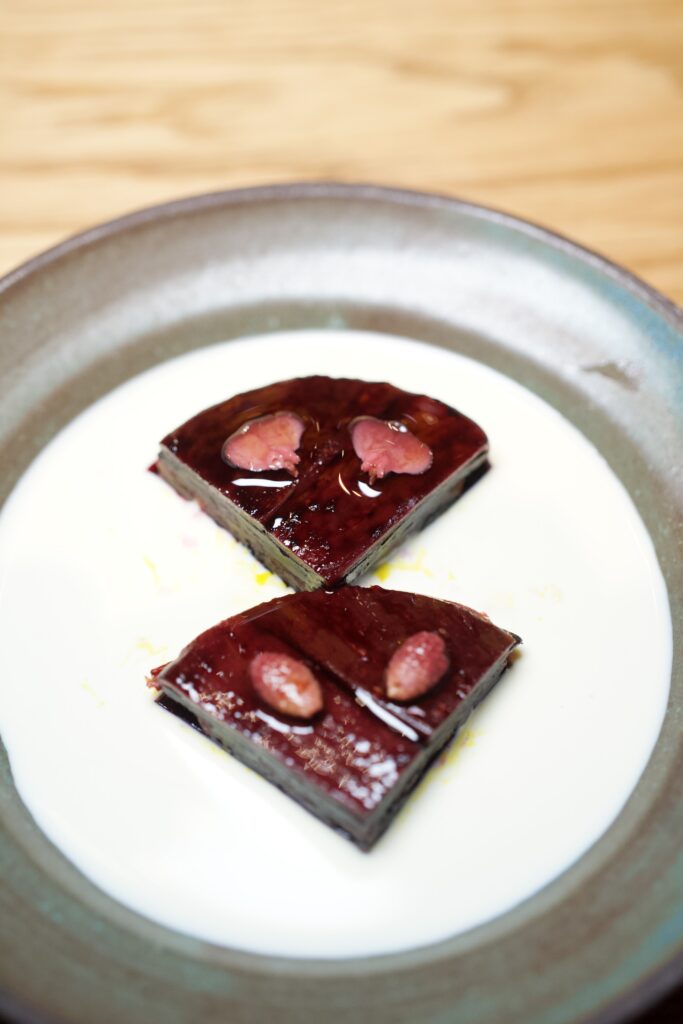
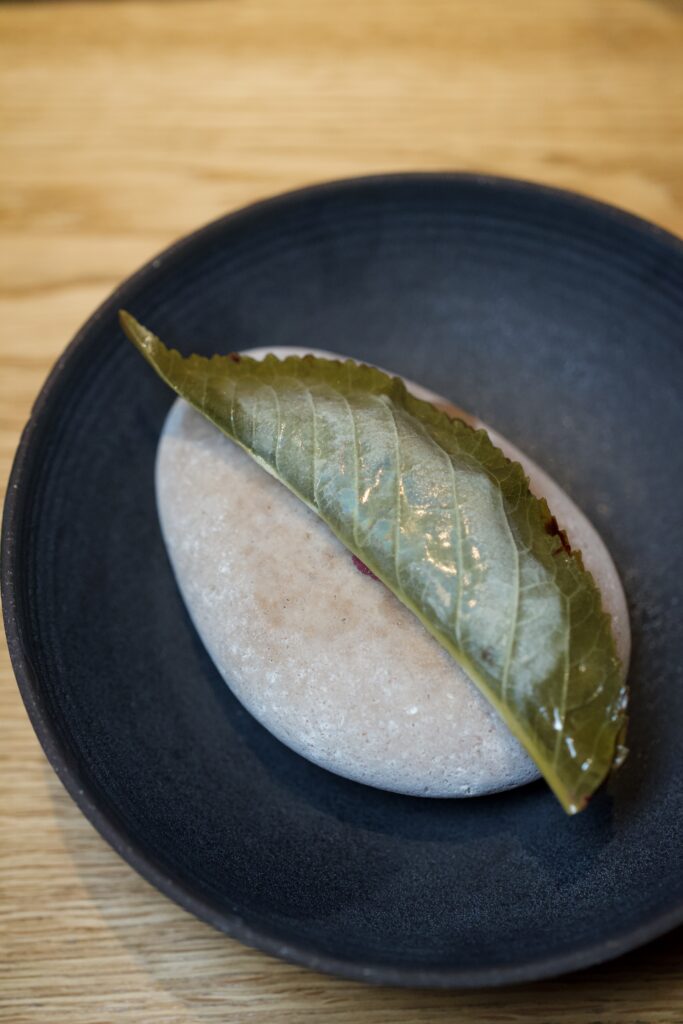
Desserts offered two different approaches. The first was a cherry leaf ice cream, which was fragrant and light, a delicate finish to the meal. The second was a layered “cake” made from different fruit leathers, served with a milky sauce. While both were enjoyable, I found myself wondering why, in the middle of summer, the berries were not served fresh? A balance of fresh and preserved elements might have provided more contrast and highlighted the berries at their peak.
Kadeau in Copenhagen holds its two Michelin stars with good reason. The restaurant strikes a fine balance between Nordic minimalism and “hygge”—that sense of warmth and coziness. The food is delicious and meticulously crafted, with a clear identity centered around preservation. However, this dedication to preservation does raise questions in the summer months, when fresh fruits and vegetables are at their best. While the techniques are undeniably impressive, I would have liked to see more of the season’s bounty served fresh. That said, this is a matter of personal preference, and I am now even more curious to experience Kadeau’s winter menu, where preservation undoubtedly take center stage.
Practical information
Location: Copenhagen, Denmark
Head Chef: Nikolai Nørregaard
Menu: 12 course tasting menu (aproximately $500)
Website: www.kadeau.dk
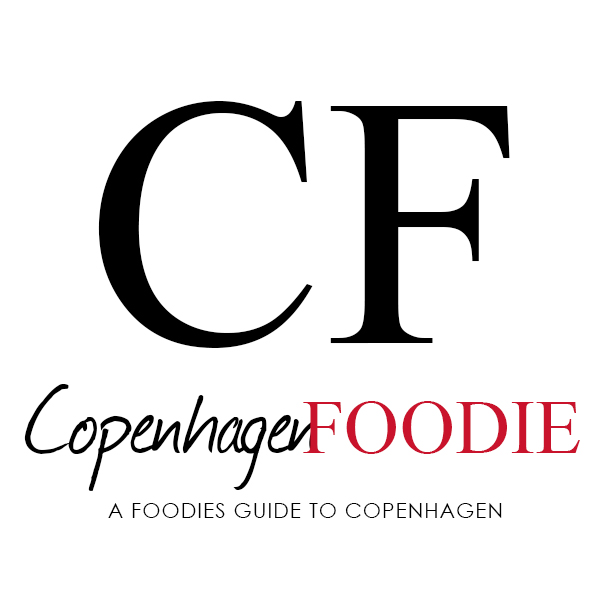
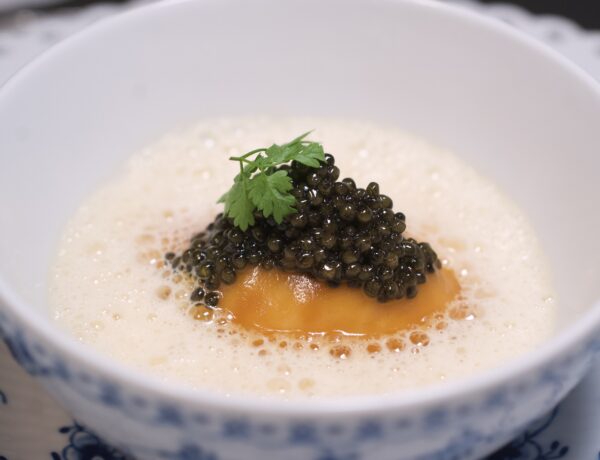
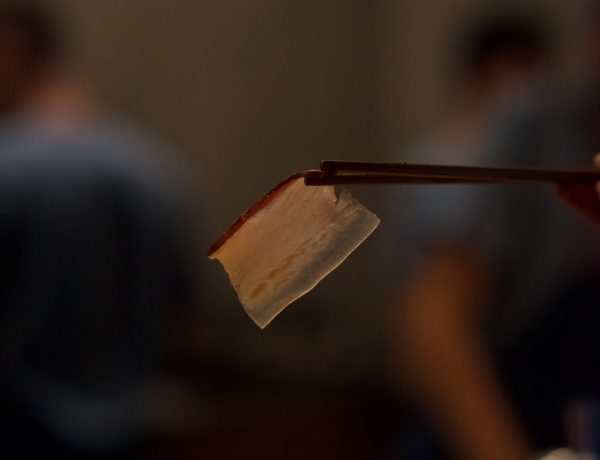
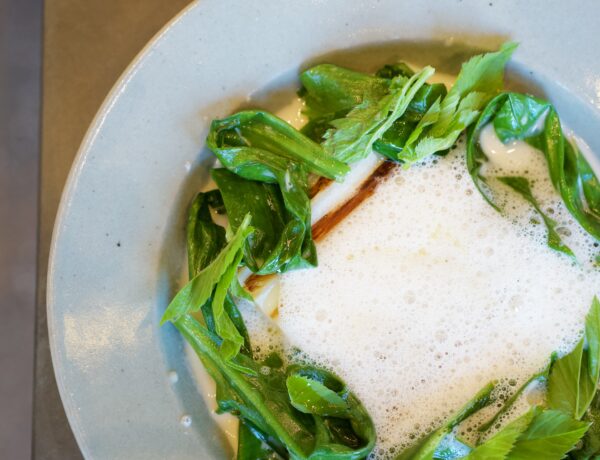
No Comments